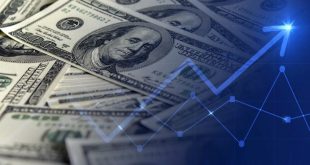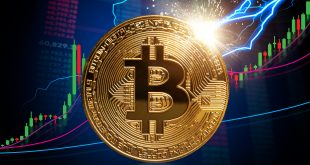America and Germany decided to adopt stricter restrictions to circumvent COVID-19 on Thursday, away Austria, there are tailored or modified lockdowns elsewhere all over the globe to combat the emergence of the new Omicron strain. Such measures provoked turmoil across financial markets, lest it could ignite severe global economic slowdown and hinder recovery.
On Friday, the overall performance of the North American trading session stirred optimism at higher levels as lockdowns in the U.S. seem out of the equation at least until a real threat of the latest variant on the economy could be proved.
Market sentiment soured after the Financial Times (FT) shares comments from Moderna’s CEO Stéphane Bancel suggesting further hardships of Omicron. Bancel warned it would take months before pharmaceutical companies can manufacture new variant-specific jabs.
On Wednesday, there were 222,000 initial claims for unemployment benefits in the US during the week ending November 27, compared to the previous revised reading of 194,000, below market’s expectation for 240,000.
Major Central Banks
Even the most hawkish BoE’s policymakers believe that the Omicron has added a big deal of uncertainty regarding taper and interest rate hiking. BoE is likely to wait for more information before tightening monetary policy. This was voiced by Michael Saunders, member of the Monetary Policy Committee, Friday. The UK central bank would likely maintain its policy rate at 0.1 per cent at the upcoming December meeting.
Across the Atlantic Ocean, the Big Six bank wrote an open letter demanding BoC to halt to stimulus, the letter also says the central bank needs to hike rates in the next few weeks or risk depression of the economic recovery. Next week, specifically on Wednesday, the Bank of Canada will have its monetary policy meeting. Analysts tend to expect a relatively quiet meeting. The central bank could maintain the view that the outlook is evolving as expected and that inflation is transitory.
Canada: Economy Adds 153.7K Jobs in November
European Central Bank Chief Christine Lagarde said the ECB was unlikely to raise interest rates in 2022 and that the current high level of Eurozone inflation, which hit 4.9 per cent in November, was a passing “hump” and would decline next year.
The annualized Eurozone Consumer Price Index (CPI) jumps by 4.9% in November, surprising markets to the upside while higher from the previous rise of 4.1%, the latest data published by Eurostat showed on Tuesday. The consensus forecast was for a drop to 3.7%.
Although the US Federal Reserve is now pondering monthly asset purchases taper at faster pace, ECB’s Christine Lagarde continues to insist that no inflation risk exists. The currently measured inflation, she says, is a temporary problem that will disappear once supply bottlenecks are overcome, so the ECB will not be changing its policies.
The economic recovery from a pandemic in the Eurozone is still incomplete and the recent inflation shock along with a new pandemic waves are endangering the rebound, European Central Bank policymaker Fabio Panetta said on Thursday.
In the USA, Fed Vice Chair Richard Clarida said on Tuesday that the labour market right now is a lot tighter than it was following the previous two recessions and that wages gains are healthy but not out of line with productivity. Adverse supply shocks can be a challenge for monetary policy, he added, because they push up both inflation and unemployment. Clarida will be replaced by Fed Governing Board member Lael Brainard as Vice Chairman of the Fed in Q1 2022.
Clarida’s remarks have not provoked any meaningful market reaction, given they do not add anything new to the current monetary policy debate. The ECB looks obliged to ensure price stability under all circumstances. There is no provision for the possibility of letting prices run hot for long. Unlike the Fed, the ECB cannot legally seek to balance the goal of price stability with other monetary-policy objectives.
New Zealand’s central bank would consider risks to be pointed more in favor of faster monetary tightening if market interest rates is not raised according to its chief economist. “If we were sitting here and still seeing very low interest rates, then you might say the risks are actually more on the upside,” Yuong Ha said in an interview Tuesday in Wellington. RBNZ last week raised its official cash rate for the second time in two months, to 0.75%, and projected a tightening cycle that will take it to about 2.5% over the coming two years.
The Bank of Japan was urged this weekend by the OECD to continue its current monetary easing, given that inflation remains below the bank’s 2% target, because weak recovery and temporary downward pressures on prices will likely keep inflation below target for some time.
The September quarter national accounts, released on Wednesday by the Australian Bureau of Statistics, showed gross domestic product fell 1.9% compared with the previous three months. That result surprised economists who had mostly tipped a 2.5%-3% contraction. At an annual rate, the economy expanded at a 3.9% clip.
Hungary’s central bank unexpectedly raised interest rates for the fourth time in just two weeks on Tuesday amid a surge in inflation that has put increased pressure on the forint and its bond market.
The National Bank of Hungary was the first European Union central bank to start raising interest rates in June to combat growing price pressures amid a faster-than-expected recovery from the coronavirus pandemic.
Forex
The US dollar is expected to stay strong in 2022. EUR/USD and USD/JPY could trade at 1.10 and 120.00, respectively. Those expectations are based upon the idea that sharper Fed tightening cycle to push the dollar ahead. Assuming that Omicron risks play out closer to the benign end of the spectrum, therefore the sharper Fed tightening cycle could return as a theme in early 2022. This should be good news for the dollar.
Currency markets witnessed remarkable stability on Thursday, as investors awaited signs of the threat that the new Omicron strain of the Coronavirus may pose and the speed with which the US Federal Reserve will reduce stimulus.
The sterling fell to a one-year low versus the US dollar Tuesday due to the sentiment of divergence between the Federal Reserve and the Bank of England following hawkish comments from Fed’s chairman Jerome Powell.
The US dollar took off and the euro plunged, dragging the pound along for the ride as investors weigh the risks of the contagion of the Omicron coronavirus variant and the concerns that there is no effective vaccine solution.
Speaking on State TV in Turkey on Tuesday, Turkish President Recep Erdogan said that he will boost investment, employment, growth and production by lowering interest rates.
USD/TRY has not seen a reaction to Erdogan’s statements in recent trade, but on Tuesday was back to record highs in the 13.50 area, despite most other emerging markets’ currencies appreciating versus the US dollar on the day.
Shares
The selloff gained force Friday, leaving the NYSE FANG+ Index of Tech Industry’s giants neighboring the correction territory, or a 10% drop from the highest. That’s not seen as a good sign heading into the end of the year, the most illiquid trading season.
Shares of Tesla, Netflix, Nvidia and Meta Platforms have all lost over 10% in the past few weeks. That wiped several hundreds of billions from their market values, with Meta losing some USD 224 billion since its shares hit a September record.
Momentum stocks, including Nvidia and high-flying software names, were among Wall Street’s top performers in 2021, with their high levels of growth spurring a frenzy of buying.
Stocks on Wall Street fell in early trading Tuesday, driven lower by the growing possibility the Fed may remove its supports for the economy.
Japanese stocks closed lower Thursday, December 2, weighed by concerns about the economic impact of the new mutated Omikorn outbreak of the coronavirus and the Federal Reserve’s shift in monetary policy. The Nikkei index closed down 0.65%, recording 27753.37 points, after falling by 1.04% earlier in the session.
Fed Chair, Jerome Powell, told a Senate committee on Tuesday that inflation was likely to persist into 2022 and that the Fed would consider tapering more quickly in response. The S&P 500, which had been down roughly 0.5 percent for much of the morning, fell after Powell’s comments. The index was down 1.5 percent at 11 a.m., more than giving up its gains from Monday.
The combination of potential economic confusion brought on by Omicron and less support to markets from the Fed could be a particularly dangerous combination for stocks.
Stocks prices were falling around the world before Powell’s testimony as investors struggled to understand the danger posed by the Omicron variant. The Stoxx Europe 600 fell 0.4 percent. In Asia, the Nikkei 225 in Japan and the Hang Seng in Hong Kong had each dropped more than 1 percent.
Gold
The XAU/USD recovered as the New York session winds down, up by 0.86% and recording a break above USD1,792 that could push gold towards USD 1,800 and even beyond. Gold climbs as the New York session winds down. The precious metal is trading at USD 1,784.
The market sentiment was relaxed throughout the American session, with US shares ending the day in the red territory, losing between 0.17% and 2.54%. In the bond market, US bond yields, fell leading by 2s down two and a half basis points, settling at 0.593%, and 10s losing nine basis points at 1.358%.
Gold’s daily chart shows that Friday’s price action is forming a bullish engulfing candle pattern, with an upside implication; nevertheless, a daily close above USD1,780 is necessary to confirm its validity.
Gold prices fell on Thursday as investors expected the Federal Reserve (the US central bank) to scale back its bond-buying program faster to counter soaring inflation despite economic concerns over the spread of the new mutated Omicron.
Testifying before Congress on Wednesday, Federal Reserve Chairman Jerome Powell said the central bank must be prepared to respond to the possibility that inflation does not subside in the second half of 2022.
Gold is Rising But Waiting For The Data
Commodities
Continued weather-driven poor demand expectations keep pressuring natural gas futures in early trading Thursday as the market awaited the latest round of weekly government inventory data. The January Nymex contract was off 9.8 cents to $4.160/MMBtu.
Factors Impacting Crude Oil Prices
The number of rigs drilling for oil in the US. was unchanged in the latest week at 467, according to oil-field services company Baker Hughes Co. The rig count was 221 rigs higher than last year when there were 246 active rigs, Baker Hughes said Friday.
The nation’s gas-rig count stood at 102, flat in the latest week. It was up by 27 compared with the same week last year. The US offshore-rig count was 13 this week, decreasing by two from last week and was unchanged from last year
Crude oil prices edged higher on Friday following statements by OPEC+ that the group could review its policy to hike output if a rising number of pandemic lockdowns obstructs off demand.
OPEC+ surprised the market on Thursday when it stuck to its plans to add 400,000 barrels per day (bpd) supply in January. Its decision to continue increasing monthly crude production is a vote of confidence in the near-term demand outlook.
OPEC+ is pondering the impact of the new Omicron variant on oil demand, but the group left the door open to changing policy swiftly if demand suffered from measures to contain the spread of the Omicron coronavirus variant.
OPEC+ said a meeting could be scheduled on Jan. 4. Brent has climbed to $71 per barrel, which puts it around $5 above yesterday’s daily low.
Another wave of lockdowns could result in up to 3 million bpd (barrels per day) of oil demand lost in the first quarter of 2022 as governments prioritize health safety over reopening plans, of which there is already telltale evidence, from Australia delaying its reopening to Japan banning foreign visitors.
Brent’s six-month backwardation narrowed to around $1.50 per barrel, the lowest since March. WTI’s six-month backwardation fell to about $1.90 per barrel, its lowest since September. ,
The US Dollar
It will be very difficult to sell the USD as a thematic strategy given the global monetary policy setup. Fed’s hawkishness to be a significant source of balance to a USD retreat
Non Farm Payrolls were +210000, well below expectations, and revisions added a relatively modest 82000. Hourly earnings were also not as strong as expected: +0.3% MoM and 4.8% YoY. In contrast, the household survey data were extremely strong, with unemployment down 0.4pt to 4.2%, even with a 0.2pt rise in the participation rate.
With a hawkish Fed profile in place (faster taper and likely hawkish SEP forecasts), USD dips should be shallow particularly versus funding currencies.
Cryptocurrencies
A sudden bitcoin and crypto selloff has followed a warning made by famed investor Louis Navellier that widely-expected Federal Reserve taper will potentially burst the bitcoin and crypto bubble.
Bitcoin and cryptocurrency prices have fallen sharply, wiping around $300 billion worth of value from the combined crypto market in just two days.
The bitcoin price dropped to around $51,000 per bitcoin after trading around $69,000 just weeks ago, in a fall of almost 30%.
The metaverse is a massive opportunity for the crypto space, according to a Bank of America strategist; Haim Israel who predicted that cryptocurrencies will finally be used widely for transactions in virtual worlds.
The English Premier League considers a partnership with a cryptocurrency platform that provides non-fungible tokens (NFT).
Other Developments
The seasonally adjusted IHS Markit/CIPS UK Services Purchasing Managers’ Index (PMI) was revised lower to 58.5 in November versus 58.6 expected and a 58.6 – last month’s flash reading. The broader Topix index jumped 1.63 percent to 1957.86 points, but fell 1.3 percent weekly.
Eurozone’s Retail Sales rose by 0.2% MoM in October versus 0.2% expected and -0.4% last, the official figures released by Eurostat showed on Friday.
Managing Director of the International Monetary Fund, Kristalina Georgieva, said on Friday that she had already been concerned that the global economic recovery had been losing steam before the emergence of the Omicron variant.
Georgieva added that tariff reductions could also help global growth and said she was encouraged by the US Trade Representative looking into possible reductions.
The US Financial Times revealed on Wednesday that America intends to announce the postponement of the trade agreement with Britain, under which the tariffs on steel and aluminum coming from Britain, which had been imposed by former US President Donald Trump, would be removed.
French industrial production rose 0.9 percent from the previous month in October 2021, partially recovering from a 1.5 percent rate decline in September and exceeding market expectations of a 0.5 percent advance.
The seasonally adjusted IHS Markit/CIPS UK Services Purchasing Managers’ Index was revised down to 58.5 in November vs. 58.6 expected and 58.6 – last month’s preliminary reading.
 Noor Trends News, Technical Analysis, Educational Tools and Recommendations
Noor Trends News, Technical Analysis, Educational Tools and Recommendations





